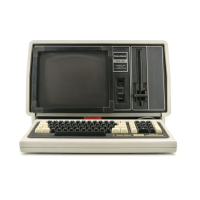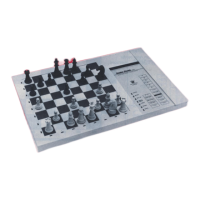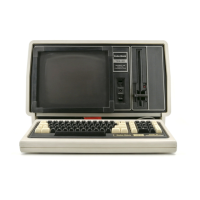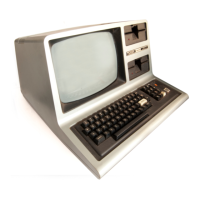MEMORY MAP
The first page of the
Memory
Map (page
5)
shows the break-
down of the large blocks
of memory in the Color Computer.
One variable in this block
is the video display which may be
located anywhere
in the memory. BASIC normally locates
the
video
display at
the Hexidecimal addresses
0400
-
05FF.
The next two
pages of the Map
explain
the
addressing for the
PIA's.
In
general, the even numbered memory
locations
are
the
I/O
registers and the odd
numbered memory locations are the
controll registers. Bit two
of the control registers determines
what is
addressed
at
the even numbered memory locations. If
this bit is set
high (logic
1)
the data
I/O
register is addressed.
If it is set low the data
direction register
is
addressed. Norm-
ally the data direction
register
is
addressed only during initial-
ization to allow
configuration of the data inputs and outputs.
(By clearing bit 2 and
writing
to
the even numbered memory
location
one address below, each bit of the PIA may be set as
an input or an output. A
1 in the
data
direction register
sets
the bit as an output and a sets
the bit as an input.)
The addresses from FFC0-FFDF
are the
control registers
for
the
SAM address multiplexer
chip. There are no
data lines
to
the
SAM chip therefore
two addresses are
used to control
each
register.
In general,
writing any data
to an even numbered
memory location
will clear the register and writing
any data
to
an
odd numbered
memory
location will
set the register.
Ad-
dresses
FFC0-FFC5
control
the display
mode.
To
select
a cer-
tain display
mode, both these
registers
and the
PIA controlling
the
VDG chip
must be set
to the proper
mode.
However,
it is
also possible to
set the
SAM
registers
to
one
mode and
the
PIA controlling
the
VDG to another
mode,
and
obtain a
useful
video
mode. These cross
modes are
explained
in
more
detail
in the
Video Interface
section.
Addresses
FFC6-FFD3 control the display starting address.
If
all of the registers are cleared, the display will begin at
0000.
Normally register F2 will
be
set causing the display
to
start at
0400.
This feature of the
SAM
chip allows the display to
be
paged
through
all of the RAM. Register P1 controls a feature
which is not used
in the Color Computer. Therefore, it should
be cleared
at
all
times.
Addresses FFD6-FFD9 control
the
clock
speed
of
the CPU.
The Color
Computer is designed
to
operate
at 0.89
MHz.
Addresses FFDA-FFDD control the
memory
size
set up
of the
SAM chip.
These
addresses select 4K, 16K, or
32K
of
RAM
in
the Color
Computer. This memory size option should be
changed only by the
reset routine in BASIC. Changes
at
other
times may erase the
contents of
RAM.
Register TY, at ad-
dresses FFDE
-
FFDF, should be cleared
at
all times.
The
final
series of addresses
in the Color Computer are
the
interrupt
and reset vectors. Whenever
the CPU receives
a
reset
or interrupt
it will load
the address at the indicated location
and begin execution
at the new location.
The dual
set
of
addresses are listed because
the vectors are
mapped into the
top of
the BASIC ROM (BFF2-BFFF),
i.e., if
the CPU reads
FFFF
it
will
actually read
the contents of BFFF.
However,
it is also possible
to set the SAM registers
to one
mode and
the PIA controlling
the VDG to another
mode, and
obtain
a useful
video mode. These cross modes
will be
discussed
in more
detail in the Video Interface
section.
4
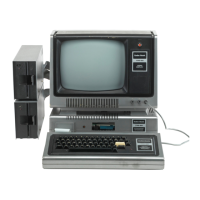
